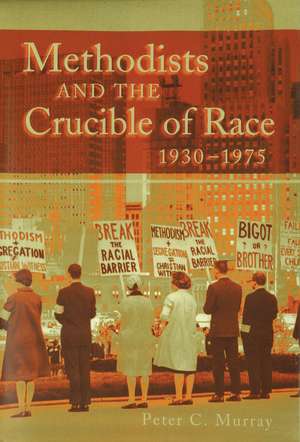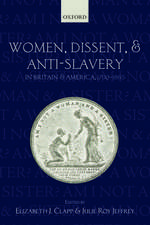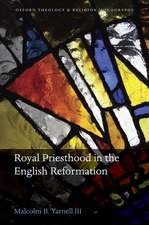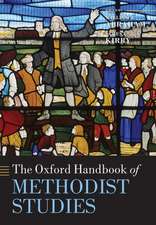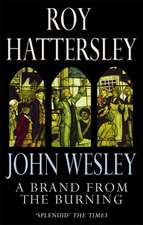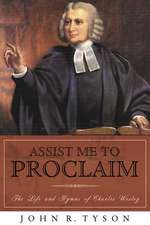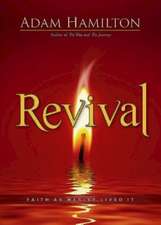Methodists and the Crucible of Race, 1930-1975
Autor Peter C. Murrayen Limba Engleză Hardback – 5 mai 2004 – vârsta ani
In Methodists and the Crucible of Race, 1930–1975, Peter C. Murray contributes to the history of American Christianity and the Civil Rights movement by examining a national institution—the Methodist Church (after 1968 the United Methodist Church)—and how it dealt with the racial conflict centered in the South. Murray begins his study by tracing American Methodism from its beginnings to the secession of many African Americans from the church and the establishment of separate northern and southern denominations in the nineteenth century. He then details the reconciliation and compromise of many of these segments in 1939 that led to the unification of the church. This compromise created the racially segregated church that Methodists struggled to eliminate over the next thirty years.
During the Civil Rights movement, American churches confronted issues of racism that they had previously ignored. No church experienced this confrontation more sharply than the Methodist Church. When Methodists reunited their northern and southern halves in 1939, their new church constitution created a segregated church structure that posed significant issues for Methodists during the Civil Rights movement.
Of the six jurisdictional conferences that made up the Methodist Church, only one was not based on a geographic region: the Central Jurisdiction, a separate conference for “all Negro annual conferences.” This Jim Crow arrangement humiliated African American Methodists and embarrassed their liberal white allies within the church. The Supreme Court’s Brown v. Board of Education decision awakened many white Methodists from their complacent belief that the church could conform to the norms of the South without consequences among its national membership.
Murray places the struggle of the Methodist Church within the broader context of the history of race relations in the United States. He shows how the effort to destroy the barriers in the church were mirrored in the work being done by society to end segregation. Immensely readable and free of jargon, Methodists and the Crucible of Race, 1930–1975, will be of interest to a broad audience, including those interested in the Civil Rights movement and American church history.
During the Civil Rights movement, American churches confronted issues of racism that they had previously ignored. No church experienced this confrontation more sharply than the Methodist Church. When Methodists reunited their northern and southern halves in 1939, their new church constitution created a segregated church structure that posed significant issues for Methodists during the Civil Rights movement.
Of the six jurisdictional conferences that made up the Methodist Church, only one was not based on a geographic region: the Central Jurisdiction, a separate conference for “all Negro annual conferences.” This Jim Crow arrangement humiliated African American Methodists and embarrassed their liberal white allies within the church. The Supreme Court’s Brown v. Board of Education decision awakened many white Methodists from their complacent belief that the church could conform to the norms of the South without consequences among its national membership.
Murray places the struggle of the Methodist Church within the broader context of the history of race relations in the United States. He shows how the effort to destroy the barriers in the church were mirrored in the work being done by society to end segregation. Immensely readable and free of jargon, Methodists and the Crucible of Race, 1930–1975, will be of interest to a broad audience, including those interested in the Civil Rights movement and American church history.
Preț: 435.27 lei
Preț vechi: 512.07 lei
-15% Nou
Puncte Express: 653
Preț estimativ în valută:
83.29€ • 86.97$ • 68.78£
83.29€ • 86.97$ • 68.78£
Carte tipărită la comandă
Livrare economică 15-29 aprilie
Preluare comenzi: 021 569.72.76
Specificații
ISBN-13: 9780826215147
ISBN-10: 0826215149
Pagini: 288
Ilustrații: 2 tables, 4 maps
Dimensiuni: 156 x 235 x 28 mm
Greutate: 0.63 kg
Ediția:First Edition
Editura: University of Missouri Press
Colecția University of Missouri
ISBN-10: 0826215149
Pagini: 288
Ilustrații: 2 tables, 4 maps
Dimensiuni: 156 x 235 x 28 mm
Greutate: 0.63 kg
Ediția:First Edition
Editura: University of Missouri Press
Colecția University of Missouri
Recenzii
"This is a carefully researched, skillfully interpreted, and provocative study that focuses on an important subject. Murray's volume is one of a small number of first-rate scholarly studies that are beginning to fill a gap in historians' knowledge about and understanding of the ways in which the United States' major religious institutions were affected by the Civil Rights Movement."—Alfred A. Moss, Jr.
"Murray's institutional history makes a critical contribution to our understanding of one of America's major religious and civic organizations. Specialists in American religious history will appreciate his meticulous documentation; general readers will find his interpretations thought-provoking."—Journal of African American History
Notă biografică
Peter C. Murray is Professor of History at Methodist College in Fayetteville, North Carolina.
